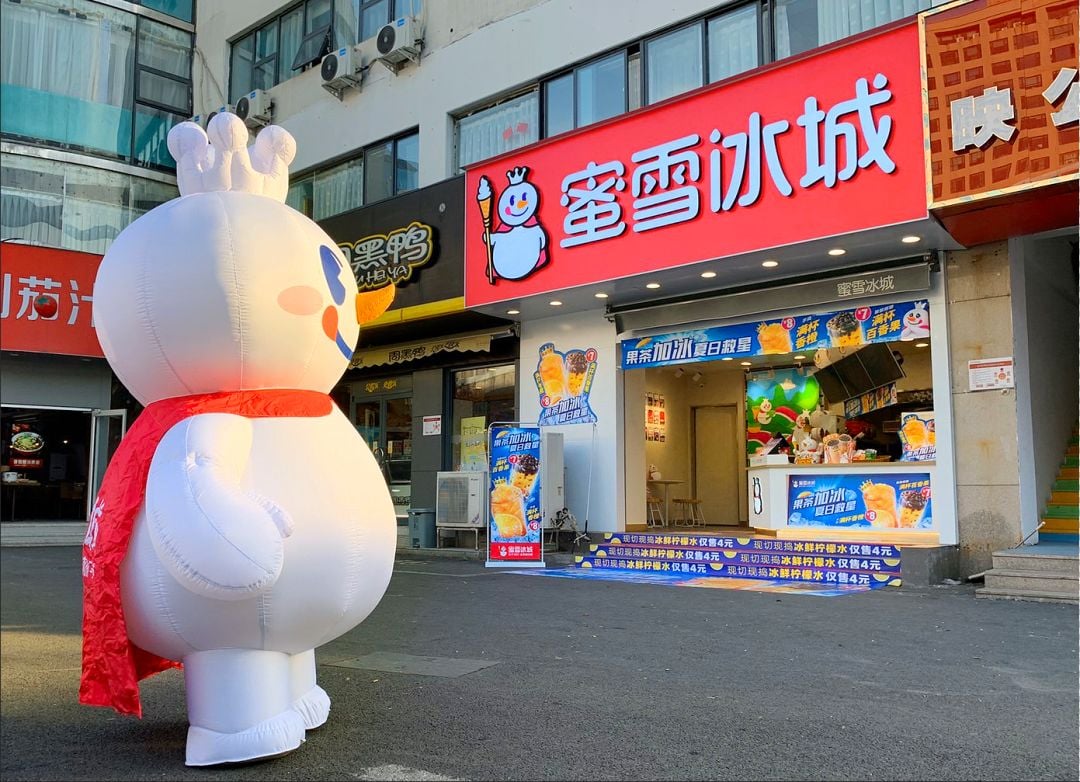In a world where fast food franchises incite cringey rap battles on Twitter, troll industry competitors with terrible roasts, and produce trap hits with lyrics like “You number one? That’s a joke/ Why your ice cream machine always broke?”, KFC China’s attempts at localization are honestly tame in comparison.
In the fast food giant’s latest attempt to earn cultural clout from their coveted China market, Kentucky Fried Chicken is selling more things that are decidedly not fried chicken. Apparently the KFC branch that reinvented itself as a shrine to the CCP mythical war-hero Lei Feng just wasn’t… Chinese enough.
The most recent addition to KFC’s Chinese menu is perhaps the most dissonantly-branded item yet: a darling of Chinese midnight snacks, boiled skewers, or chuan. KFC plans to launch these, and more Chinese-snack-type menu items, like lou mei (卤味), in ten major cities, including Shanghai, Chengdu, Chongqing and Harbin. The franchise has even established an independent supply system for the production of these exclusive menu items, and intends to further explore the sprawling market for midnight snacks (夜宵) that exists within China.
KFC China now has hotpot on sticks. pic.twitter.com/ELaqeJfcsg
— Ran (@ran_lpl) July 14, 2019
Some Chinese netizens on Weibo have criticized KFC, questioning their prices, presence in China and brand identity as an American fast food chain, with one user writing “Are you not a Western-style fast food restaurant????”
Other commenters wonder why you wouldn’t just going outside to enjoy real Chinese street food.
“For the same price as KFC, I can eat two or three times more right outside,” wrote one.
Many worry that KFC’s expansion to the late night market may strip away the essence of midnight-snack culture in China — it’s a legitimate concern that has probably been bolstered by KFC’s astonishing success at catering to the Chinese palette.
Over the past twenty years, KFC has managed to make a seamless brand transition into a go-to establishment for traditional Chinese breakfast food. The franchise began offering localized morning options in China during the early 2000s, when they picked up on customers’ desire for street-food style breakfasts, eaten on the commute to work.
They started off simple with soy milk, congee and fried sticks of dough, called youtiao (油条), but due to consumer demand, have since expanded to offer a full Chinese menu, including everything from egg tarts to veggie soup. It’s no wonder that KFC is American fast food’s biggest success story in China, beating out other competitors like Burger King and McDonald’s for the biggest share of the Chinese market (meanwhile, the latter is fighting off accusations from its Chinese consumers that their Big Mac is shrinking).
They’ve also been incredibly adept at using celebrity endorsements and brand collaborations in order to attract customers in China. Recent partnerships even include a stint with legendary Japanese role-playing game Final Fantasy.
FFXIV ver. China has a dungeon you can only access by finishing a 4 person family meal at KFC (they will give you the redemption code once the morbol burger and others are consumed)
This means Colonel Sanders is canonically part of the Final Fantasy multiverse along with GACKT pic.twitter.com/GRIX4KmBuK
— 1000 Jutsu (@HokutoAndy) July 15, 2019
Success of KFC proportions though, raises questions about how American fast food chains may be altering the direction of modern Chinese food culture. There’s something that feels innately wrong about eating sticks of youtiao and congee while staring into the pixelated eyes of some old white Colonel named Sanders, a figure plastered on posters around KFCs worldwide.
Indeed, in sentiments expressed by many Chinese netizens, how could an American fast food chain ever capture the spirit of a barbecue-scented roadside stall serving skewers and cheap beer? The culture surrounding midnight-snacks (and all food!) in China is sacred, and as KFC doubles down on its localization strategy, some sensitivity to mealtime rituals may be in order.
Either way, KFC offering more variations on meaty skewers is probably a more straightforward marketing strategy than spewing half-baked lines of beef-related vitriol into a mic and calling it a rap anthem (sorry, Wendy’s).
















